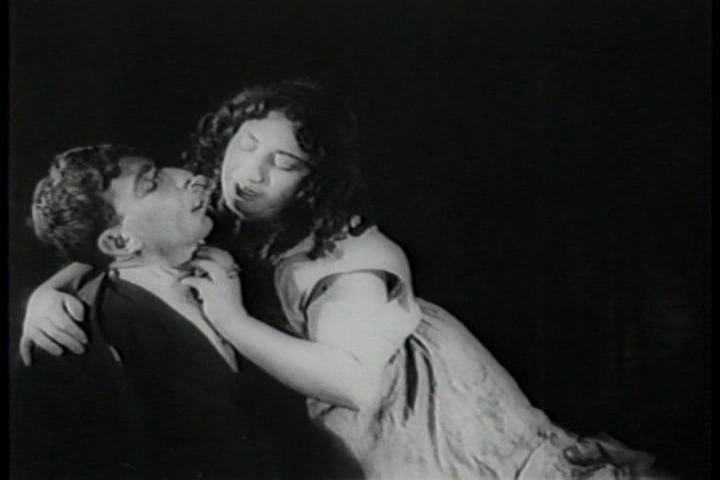In the second piece in our series on Jews and Crime, Jarrod Tanny evokes a gangster’s wedding in an Odessan Jewish Key.
Nestled on the shores of the Black Sea, the City of Odessa was a notorious bastion of Jewish criminality and merrymaking, much to the delight of its admirers, but much to the horror of the tsarist Russian regime of the late nineteenth and early twentieth centuries. Like mobsters everywhere, the Jewish rogues of Odessa fashioned themselves as aristocrats and expected to be treated like royalty, even those who were little more than petty thieves, pickpockets, pimps, and professional schnorrers. Perhaps no event captures their ostentatious pomp and revelry more than the gangster’s wedding in Odessa’s heavily Jewish Moldavanka district.

Weddings, of course, have always had an important place in Jewish culture. In their influential study on life in the shtetl, Life is with People: The Jewish Little Town of Eastern Europe, Mark Zborowski and Elizabeth Herzog maintained that
‘a wedding is the most joyous and most elaborate festivity in shtetl life. It represents the fulfillment of the individual, who becomes fully adult only when he marries, and the basis for the perpetuation of the Jewish people, according to the commandments of God. It is the archetype of all festivity and rejoicing, the symbol of joy and completion.’

Jewish gangsters did not deviate from such traditions, even if they were deviants; they were part of their heritage, their yichus, and they seamlessly integrated these rituals into their universe of crime and debauchery.
In 1911, one newspaper, the sensationalistic penny press, Odesskaia pochta, published in Russian, but predominantly edited, staffed, and read by Jews, reported on an ‘aristocratic wedding’ of bandits that took place in the Moldavanka. The groom, Grigorii Tsudruk, was well known in various cities for his involvement in ‘serious crimes,’ and the guest list for his ‘wedding feast’ included approximately one hundred ‘thieves and swindlers.’

Automobiles (an uncommon sight in Odessa in 1911) pulled up to the house, out of which emerged stylishly dressed gangsters in evening wear that was ‘obviously secondhand [chuzhoe plecho], as it must have been stolen.’ Police investigators, who attended in disguise, observed the ‘motley’ guests, who consisted of apartment burglars (vorovvzlomshchiki, skokari), pickpockets (marovikhery), safecrackers (shnifery), and counterfeiters (kotletchiki). The military orchestra greeted each arrival with a ‘festive flourish,’ with one famous marovikher even refusing to enter the house until the musicians played specifically for him. The groom took all necessary security precautions, even hiring low-level thieves to maintain order and give a signal for evacuation if a police raid should ensue.

But the ensuing chaos came from within when a fight broke out between one of the groom’s guests, a ‘quick-tempered’ skokar´ and a relative of the bride. Others joined in, and within a short time plates were flying, and guests were shrieking. Neighbours who had lent their furniture and housewares to the wedding party screamed out ‘thieves! thieves!’ and struggled to gather their belongings and flee the turmoil. The police promptly showed up at the door and, since the gates were locked, the trapped criminals sought out places to hide within the building – ‘burying themselves in neighbouring apartments, cellars, attics and even garbage cans. Others took to the roof, losing their jacket coattails and cuffs en route.’ Many arrests were made. The groom, however, sat quietly in his place throughout the disorder, insisting that he had already done his time and could not be charged with anything. But his ‘aristocratic wedding’ was over, ending in an amusing ‘Moldavanka sensation.’

The most infamous Jewish wedding in Odessan Jewish lore is undoubtedly the festivities surrounding the betrothal of the gangster-king Benia Krik’s sister Dvoira, which is graphically depicted in the 1926 film Benia Krik, based on Isaac Babel’s previously published Odessa Stories. The party was a lavish affair, where ‘turkeys, roasted chicken, geese, gefilte fish, and fish soup in which lakes of lemon shimmered like mother-of-pearl’ are served. Liquor flows profusely, with incessant toasting ‘to life’ (l’chaim!), and, in the film Benia Krik, the intoxicated and gluttonous guests are shown storming the dance floor. They may be dancing the traditional Jewish horah – arm in arm, rapidly swirling in circles – but the revellers are anything but traditional Jews; Benia’s gangsters lead the way, and Odessa’s prostitutes entertain the guests, while a one-man-band furiously pounds away on his drums and blares his trumpet.

Trouble ensues, however, when the police chief shows up at the wedding in advance of a massive raid planned against the gangsters, with the former assuming that a drunk and distracted underworld could be nabbed in one fell swoop. But the joke is on them. Benia’s men are aware of the impending assault and launch a preemptive strike against tsarist officialdom, burning the police station to the ground. The wedding thus concludes with the Jewish criminals ending up on top; it was a euphoric celebration for all, except for the police, and perhaps the groom, an unfortunate-looking little Jewish man who is last seen being smothered and devoured by his enormous bride.
Benia Krik’s wedding is symbolic of what may be called ‘the myth of Odessa.’ It is a realm of empowerment where weak shtetl Jews are magically transformed into gigantic and fierce gangsters who control their own destiny and tower above the Gentile authorities. It is a realm where traditional Judaic practices, Jewish speech, and Jewish mannerisms are ironically manipulated for criminal ends. And it is a realm where merriment prevails in every situation, regardless of the danger and violence, lacking the solemnity one would expect in late tsarist Russia, a time and place of rampant criminality, revolutionary upheaval, and antisemitism.

This piece is extracted from Jarrod Tanny’s book, City of Rogues and Schnorrers: Russia’s Jews and the Myth of Old Odessa, published by Indiana University Press, priced £20.99.


















